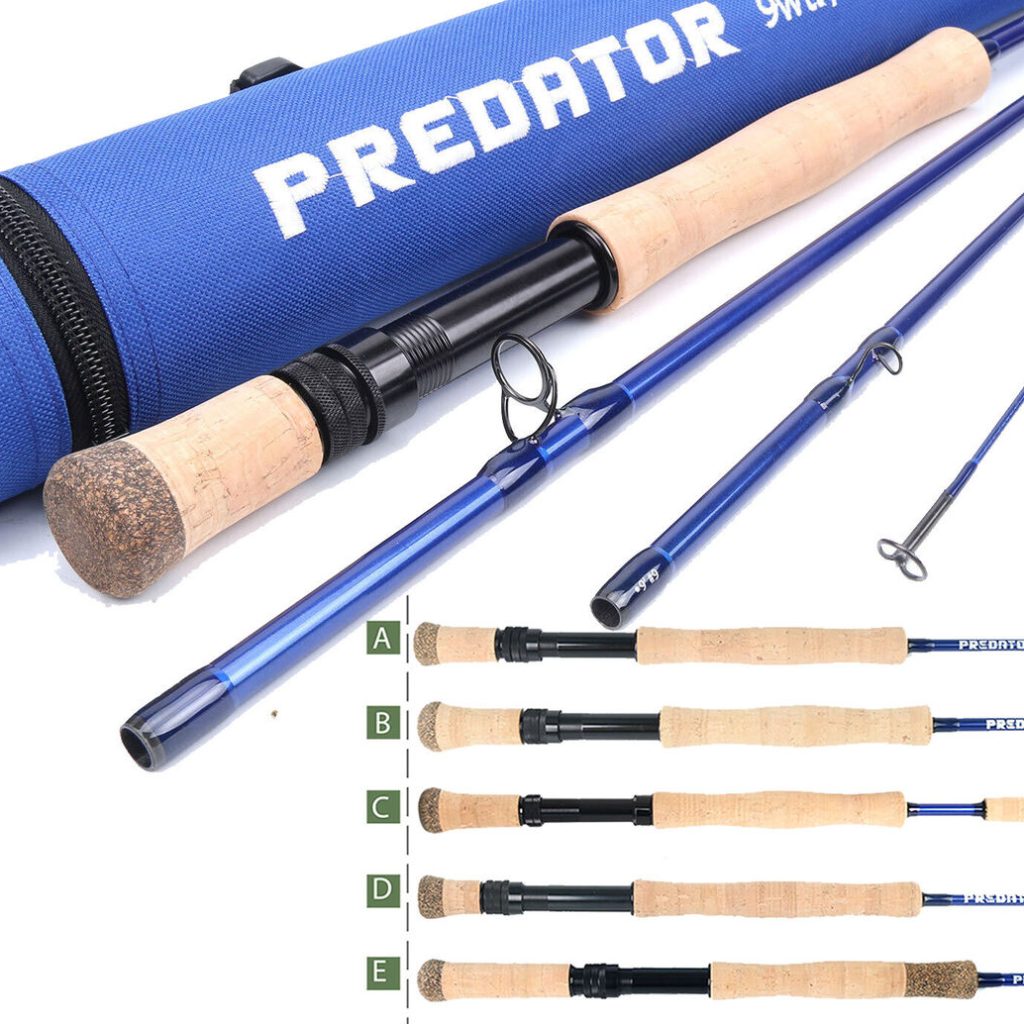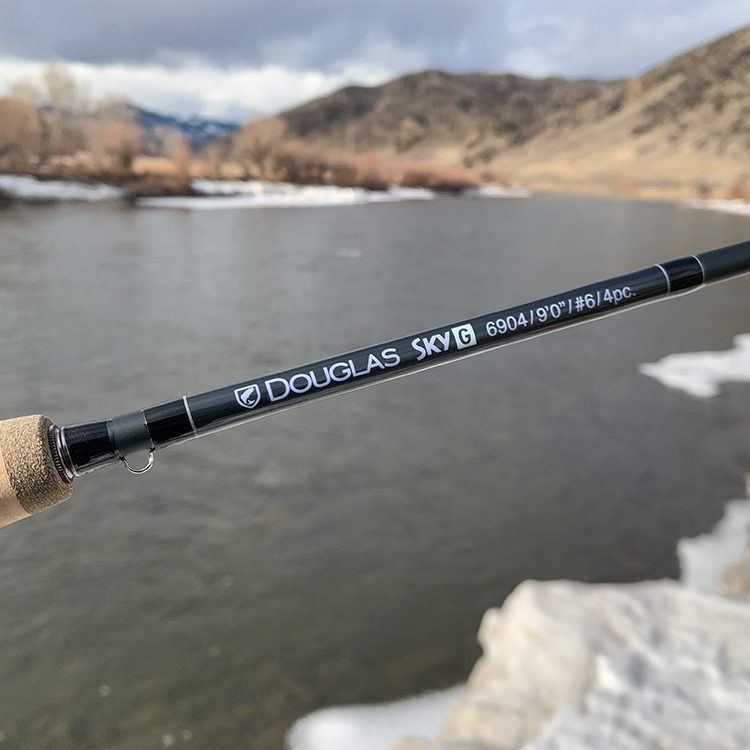Fly fishing is a rewarding sport that connects anglers with nature. One of the most important aspects of fly fishing is choosing the right rod weight. The weight of a fly rod impacts casting distance, accuracy, and the overall fishing experience. This article explores differentfly fishing rods weights, their characteristics, and how to choose the right rod for your fishing adventures.
The Basics of Fly Rod Weights
What Are Fly Rod Weights?
Fly rod weights are standardized measurements indicating the weight of the line that the rod is designed to cast. This weight is typically expressed in numbers ranging from 1 to 12. A lower number, such as 3 or 4, indicates a lighter rod meant for small freshwater fish. Conversely, a higher number, such as 8 or 10, signifies a heavier rod suitable for larger fish and saltwater environments.
Understanding these weights is crucial because they directly affect how the rod performs. A rod with an appropriate weight ensures optimal casting and improved line management. When matching the rod with the right line, you enhance the overall fishing experience and increase your chances of landing fish.
Choosing the right weight also depends on other factors, such as the type of water you’re fishing in and the species you aim to catch. Knowing how rod weights work paves the way for informed decisions in fly fishing.

Common Fly Rod Weight Categories
Rod Weight Classes
Fly rods fall into various weight classes that define their use. The most common classifications are light, medium, and heavy rods.
- Light Rods (1-4 weight): Ideal for small streams and delicate presentations. They are great for targeting small fish like trout and panfish. This category allows for gentle casting, making it suitable for technical fishing situations.
- Medium Rods (5-7 weight): These rods are versatile and great for general freshwater fishing. They can cast larger flies and tackle slightly bigger fish. If you’re fishing in rivers or lakes for various species, a medium rod is an excellent choice.
- Heavy Rods (8-12 weight): Suitable for larger fish, such as salmon and fish found in saltwater. They provide the backbone needed for casting heavier lines and bigger flies. Heavy rods are essential for anglers targeting larger game fish.
Understanding these categories helps in selecting the right rod for specific fishing conditions and species.
Selecting the Right Rod Weight for Your Fishing Style
Matching Rod Weight to Technique
Selecting the right fly rod weight depends on your fishing style and the techniques you’ll be using. If you prefer fishing in calm waters with small flies, a lighter rod is a perfect fit. These rods allow for more control and precision in delicate situations.
For more active fishing styles, such as casting in windy conditions or utilizing larger flies, a medium or heavy rod may be necessary. These rods can handle the added weight, providing better line control and strength when fighting bigger fish.
Additionally, consider the type of fishing you plan to do. If you’re planning a trip to the ocean, investing in a heavier rod is essential. On the other hand, if you’re looking to fish in small streams, a light rod will enhance your experience.
Matching the rod weight with your technique ensures a more enjoyable and productive fishing outing.

The Impact of Rod Length
Rod Length and Weight Considerations
Rod length also plays a vital role in choosing the right weight. Longer rods generally require a higher line weight, while shorter rods may use lighter lines. A standard length for fly rods ranges from 8 to 9 feet, balancing power and casting range.
Longer rods (9-10 feet) are suitable for larger rivers or situations where increased distance is needed. They can improve casting performance in windy conditions and help achieve better line control. When using a longer rod, matching it with a medium or heavy weight helps maximize its potential.
Shorter rods (under 8 feet) excel in tight spaces, such as small streams or brushy areas. A lighter rod suits these conditions, allowing for quick and accurate casts. Balancing rod length with weight ensures you have the right tool for the environment.
Understanding the Action of Fly Rods
Rod Action Explained
Another important consideration is the action of the fly rod, which relates to how the rod bends during casting. Rod action can be categorized into three primary types: fast, medium, and slow.
- Fast Action: These rods bend mostly at the tip, providing quick response and better control during fast casts. They work well with heavier lines, making them a suitable match for medium to heavy weights.
- Medium Action: These rods bend progressively along the length, offering a balance between flexibility and strength. They can work well across various weight classes, making them versatile for different fishing scenarios.
- Slow Action: Slow action rods bend throughout their entire length, providing a gentle casting feel. They are ideal for delicate presentations using lighter weights, making them suitable for small streams and light fishing.
Understanding rod action helps anglers in selecting a rod that matches their fishing technique and desired casting style.
The Importance of Line Weight
Line Weight and Rod Compatibility
Line weight and rod weight must be compatible for optimal performance. Each fly rod is designed to work with a specific line weight, typically indicated on the rod itself. Using a line that matches the rod’s designated weight enhances casting, accuracy, and overall performance.
If you use a line that is too light for your rod, it may lead to poor casting and lack of control. Likewise, using a line that is too heavy can put unnecessary stress on the rod, resulting in damage or reduced performance. It’s essential to pay attention to both the rod and line specifications to ensure a successful fishing experience.
Fishing gear manufacturers usually provide recommendations for line compatibility, helping anglers select the right combinations. Following these guidelines can improve overall casting and enhance the chance of landing fish.

Final Tips for Choosing Fly Rod Weights
Selecting Your Ideal Rod
When selecting a fly rod weight for your fishing adventures, consider several factors. Start by identifying your primary fishing locations and the species you plan to target. This knowledge will help you determine whether a light, medium, or heavy rod is most appropriate.
Test different rods when possible. Many local fly shops offer the opportunity to try out various options. Feel how the rod balances in your hand and how it casts. Make notes about what suits your preferences and gets you excited about using it.
Researching online, reading reviews, and engaging with the fishing community can also provide valuable insights. Experienced anglers can share tips and recommendations that help inform your decisions.
By taking the time to carefully choose the right fly rod weight, you will enhance your fishing experience and increase your chances of success.
Conclusion: Enjoy Your Fly Fishing Journey
In conclusion, understanding fly fishing rod weights is crucial for selecting the right equipment and enhancing your fishing experience. The weight of the rod, combined with action, length, and line compatibility, impacts casting and performance.
By taking the time to assess your fishing style, target species, and environment, you can select the perfect fly rod that meets your needs. Whether you’re casting for small trout or battling larger fish in saltwater, the right rod will significantly improve your success and enjoyment.
As you embark on your fly fishing journey, keep these considerations in mind. Doing so will help you make informed choices, allowing you to fully immerse yourself in the beauty of nature while enjoying the sport you love. Happy fishing!
